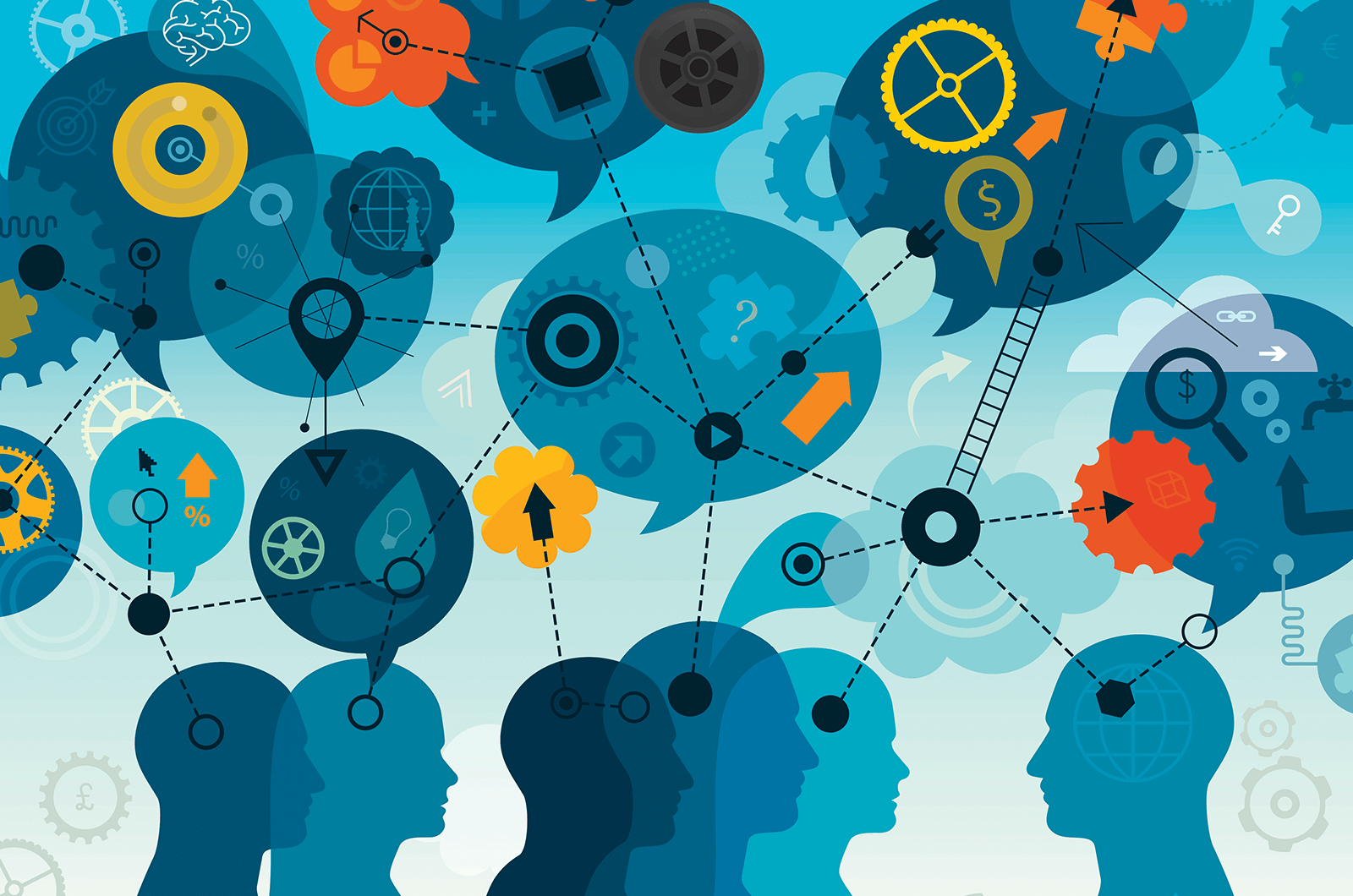Developing a creative environment where people are free to perform and share ideas without fear of judgment or failure is the ethos that underpins every club meeting. If people fear failure or judgment, they will refuse to participate.
Failure is a necessary part of most successful ideas, because success rarely comes at the first attempt. Billionaire Sir James Dyson, the inventor of the Dyson bagless vacuum cleaner, spent 15 years and had 5,126 failed attempts before he got his invention right!
What is Creativity?
To understand why creativity is so important, it is necessary to understand what it is. According to education expert Sir Ken Robinson, “Creativity is the process of having original ideas that have value.”

Many people mistakenly think that creativity is just for artists, musicians and so-called “creative types.” But according to Robinson’s definition, everyone is creative. We all have valuable ideas every single day. A person who has original, valuable ideas at work becomes important to their employer. In fact, because creative ideas lead to valuable change, it affects leadership. Leaders don’t just have an official leadership title or position; they often contribute the most and have the most influence. Creative ideas are key to businesses, organizations and even countries thriving.
How to Lead a Creative Organization
Leaders should take note from what psychologists found when they studied creativity in children. They noticed that certain behaviors by adults hindered children’s creativity:
- Judging
- Telling exactly how to do things
- Exerting too much pressure
- Constantly watching
- Creating a win/lose situation
Likewise, be wary of a culture that hinders creativity. Don’t tell employees or club members how to behave down to the tiniest detail or create an environment where employees are rewarded for being unquestioning “yes men” to their bosses.
An example of incorporating creativity into the culture is Google’s famous “20 percent time”—the idea that employees were free to spend one day a week working on their own projects. Major successes came out of this, including Gmail.
Another solution is to consider ways to capture people’s creativity. Employee surveys can be useful—but only if the employees feel truly free to speak their minds. A new employee is likely more observant than an existing one because everything is new to them. Typically, though, they are told how the company works rather than being asked if they have any suggestions for improvement.
“Because creative ideas lead to valuable change, we can even redefine leadership.”
Consider setting up suggestion boxes and incentives for good ideas. Many Toastmasters clubs benefit from asking guests what they thought of the meeting. This feedback allows the club to see what it is doing well and what might be improved. Furthermore, showing that the club values the guests’ opinions increases the chances they will join. In the workplace, leaders can give employees a stimulus to enhance their creativity, such as the opportunity to spend time in different locations or departments in order to better understand the organization and be more stimulated to share creative ideas. Toastmasters clubs require this experience, because members have the opportunity to perform the different roles required for any meeting. Many careers involve initial training that requires an employee to experience working in multiple departments. But typically, they then specialize and subsequently remain in one department, missing out on the diversity of the whole company. A person with a more rounded understanding and experience of a whole organization will understand that organization better and be in a better position to contribute creatively.

Creativity thrives on different perspectives, so diverse teams will have richer experiences to draw from, especially if partnerships and collaborations are encouraged. Two heads are better than one because you can bounce ideas off each other.
Leaders can ensure their organizations thrive in a creative environment by understanding the creative process and using it to nurture creative ideas and establish a creative environment.
The Creative Process
In my book, Brainarium: Exercise Your Creativity, I make the case that we should exercise our creativity in the same way we exercise our bodies. I therefore refer to these two stages as Creative Strength and Creative Stamina.
Creative Strength
The first stage is for generating as many ideas as possible. At the Creative Strength stage it is important not to judge the ideas, lest you risk stifling the creative flow. That is why so many brainstorming sessions fail.
Creative Strength Exercises
Imagine that you want to develop a new product or service at work. Use the following exercises to generate ideas. (Remember not to judge the ideas; the goal is to create as many ideas as possible.)
Change the assumptions. What assumptions do you have (about your business or a product or service)? How could they be changed? What is the opposite of those assumptions? For example, do you have to make a profit? What if you tried to make a loss? How would you do things differently?
What would “X” do? How would someone else (famous or not) think and act in your position? For example, how would a child run your business?
Break it up. Can you break something up and reassemble it differently? Do you need all the parts, or can you use only some?
Play. Time for recess! Can you play with an idea or object? What do you do with it? What ideas come to mind?
Creative Stamina
The second stage is called Creative Stamina, because it determines which ideas will last. This is the time to evaluate ideas and see whether they are original and have value. Because the Creative Strength and Creative Stamina stages require different thinking, it makes sense to separate them out. The key differences are shown in the next table.
Creative Strength
Generating ideas.
Divergent thinking (exploring many possible solutions).
No correct answers—anything goes!
Creative Stamina
Evaluating and judging ideas. Are the ideas original? Do they have value?
Convergent thinking (narrowing down possibilities).
Looking for the most correct or suitable answer.
There are many ways to evaluate ideas in the Creative Stamina stage. One way is to imagine you have 100 to allocate among all your ideas. How would you divide up the money? If you are part of a team evaluating, each person has 100 to allocate. You can quickly see which ideas are the most popular this way.
Creativity in an Increasingly Automated World
The world is changing fast, and the pace of innovation will only continue to accelerate. This presents immediate problems: How can educators teach children when they have no idea what the world will be like when those children graduate? How can businesses and organizations survive when they cannot even see their competition coming? The leaders of tomorrow face some unprecedented challenges.

Various reports in recent years have predicted some terrifying trends. The McKinsey (2017) and Oxford University (2013) studies predict that half of all jobs in the United States are at risk of being taken over by robots or computers in the next 20 to 30 years. Similar trends will affect the rest of the world and may threaten developing countries even more.
It is not only individuals and their jobs that are at risk. Whole businesses and industries are too. One problem leaders have always faced is how to improve. Management guru Gary Hamel said, “Most companies are built for continuous improvement, not discontinuous innovation.” The danger for existing companies is that they look for small, incremental improvements to their business rather than big changes. Consider the demise of Kodak, which used to produce the film needed in cameras. The well-known company actually developed the technology for digital photography but decided not to pursue it. Years later, everyone carries around a digital camera in their phone, while Kodak had to file for bankruptcy protection. Continuous improvement (i.e., a lack of discontinuous innovation) was its downfall.
Another problem leaders face today is a competitor with a completely different business model disrupting their industry and achieving market dominance in no time. Some call this the “Uber syndrome.” Uber revolutionized cab rides around the world through a simple phone app connecting prospective drivers to customers. Within five years of its formation, the value of Uber exceeded that of all the car rental companies combined! The car rental companies never saw Uber coming. Uber had even begun using self-driving cars and trucks for passenger transport before a fatal crash this March in Arizona put the autonomous vehicle experiment on hold. All of this demonstrates how traditional businesses—as well as jobs that require routine, predictable tasks—are at risk in the face of dramatic innovation.
A silver lining to all this doom and gloom is the obvious benefit of automation, which includes decreased costs and improved production capacity, quality and precision. In light of this, the importance (and inevitability) of creativity and lifelong learning remain. Knowledge is no longer sufficient; people need skills to survive. Toastmasters recognizes this with its focus on improving leadership and communication skills.
In 2016, the World Economic Forum predicted that creativity will be one of the top three skills needed in the workplace by 2020. A 2015 study by Nesta, a U.K. innovation charity, estimated that 86 percent of U.S. workers and 87 percent of U.K. workers in highly creative jobs were at no or low risk of losing their jobs in the future to automation. Instead, computers tend to complement these professions by making creative skills more productive. Toastmasters is a natural place to practice creativity. Table Topics necessitates quick thinking in response to a stimulus. Most of the evaluating and reporting roles also require members to use creative skills in the form of an evaluation or report.
The future may hold unprecedented challenges, but leaders and individuals can use their creativity to help shape the future. After all, every human achievement since the dawn of mankind is a result of our creativity. It’s what makes us different from all other beings on the planet. It’s what we do best.
Stuart Pink is a keynote speaker and coach on creativity. He earned third place in the 2012 Toastmasters World Championship of Public Speaking. He is the author of Brainarium: Exercise Your Creativity. Visit his website to learn more.




